Women with metastatic breast cancer fight for a place in the ‘pink parade’
Thanks to the tireless efforts of the breast cancer community, October and breast cancer are tightly bound with the ubiquitous pink ribbon. But the awareness campaign places a heavy emphasis on prevention, detection, and early diagnosis. For women with metastatic breast cancer, there is a sense that the “pink parade” has intentionally passed them by even though an estimated 465,000 annual deaths from breast cancer worldwide occur because of metastatic disease.
ABSTRACT: A global survey in nine countries reveals common ground among patients with advanced disease. Members of the BRIDGE survey steering committee explain how oncologists can use the data in their breast cancer treatment programs.
Thanks to the tireless efforts of the breast cancer community, October and breast cancer are tightly bound with the ubiquitous pink ribbon. But the awareness campaign places a heavy emphasis on prevention, detection, and early diagnosis. For women with metastatic breast cancer, there is a sense that the “pink parade” has intentionally passed them by even though an estimated 465,000 annual deaths from breast cancer worldwide occur because of metastatic disease.
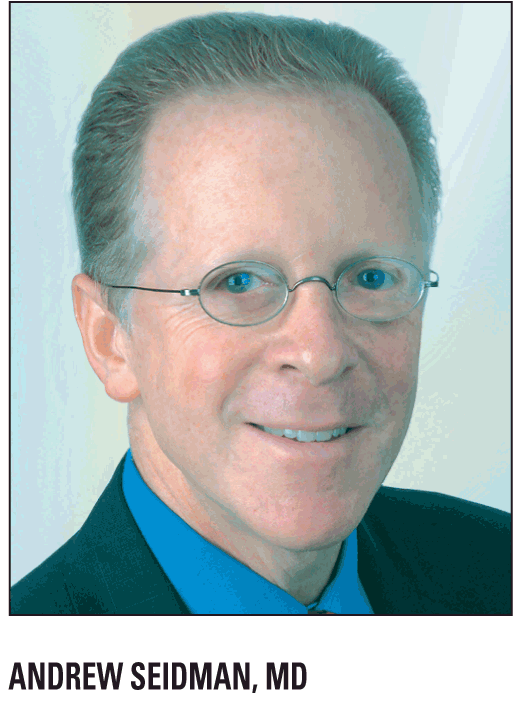
The BRIDGE Survey (Bridging Gaps, Expanding Outreach-Metastatic Breast Cancer Patient Survey) aimed to take those women off the sidelines and give them a voice. Sponsored by Pfizer Oncology, the survey collected data from 950 women with metastatic breast cancer (MBC) in nine countries (see Sidebar, below right).
In brief, 53% of those surveyed said that MBC did not garner enough public attention. In addition, 75% said they are proactive about seeking out MBC information while 51% declared the information they do find to be insufficient. Finally, despite the large number of women living with MBC, most felt that their needs and issues go unreported.
Some of the BRIDGE Survey steering committee (see Table) gathered with Andrew Seidman, MD, a deputy editor at Oncology News International and an attending physician at Memorial Sloan-Kettering Cancer Center and professor of medicine, Weill Medical College in New York, to discuss what the survey results mean for breast cancer specialists. The participants were:
• Elyse S. Caplan, MA, education director, Living Beyond Breast Cancer, based in Haverford, Pa.
• Catherine Glennon, RN, MHS, OCN, nursing director of cancer services, University of Kansas Hospital, Kansas City.
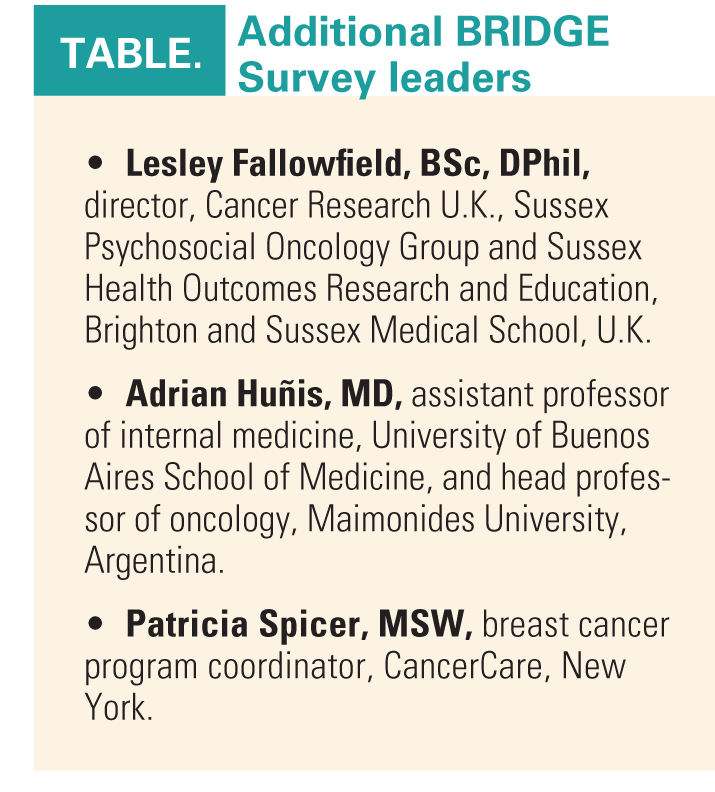
• Musa Mayer, MS, MFA, author and founder, AdvancedBC.org, based in New York.
• Ruth Oratz, MD, clinical associate professor of medicine, New York University School of Medicine, New York.
Dr. Seidman: The common theme that came through from this survey is that women with MBC really feel under-represented. As a practicing oncologist, I was not overly surprised by that finding, but it gave me some pause to think about why this situation might exist.
Dr. Oratz: A lot of attention is paid to patients with newly diagnosed breast cancer; a lot of medical information and psychosocial support are available through a variety of avenues: in the doctor’s office, in cancer groups, online, even in the lay press. The public face of advanced disease is not out there.

Ms. Mayer: A clear finding from our survey is that in some countries there is a stigma attached to having MBC. I think that fear of talking openly perpetuates the lack of a public face of MBC and makes it much more difficult to identify MBC patients and provide services.
Information channelsDr. Seidman: It also struck me that these women looked to the Internet as a valuable source of information. Given the geographic diversity of respondents, how many women actually have access to information over the Internet? In theory, the Internet could be a great leveler, but I do wonder about access and how it connects to the feeling of being under-represented.
Dr. Oratz: In terms of the way the survey was worded, this was a forced choice: We asked women what the most helpful source of information was apart from their healthcare providers. While it did turn out to be Web sites and other Internet resources, that was really an issue of availability.
Ms. Caplan: About two-thirds of respondents said they preferred printed materials compared to information on Web sites. I thought that was an interesting difference. As we look to Internet-based support, there is still this preference for printed materials.
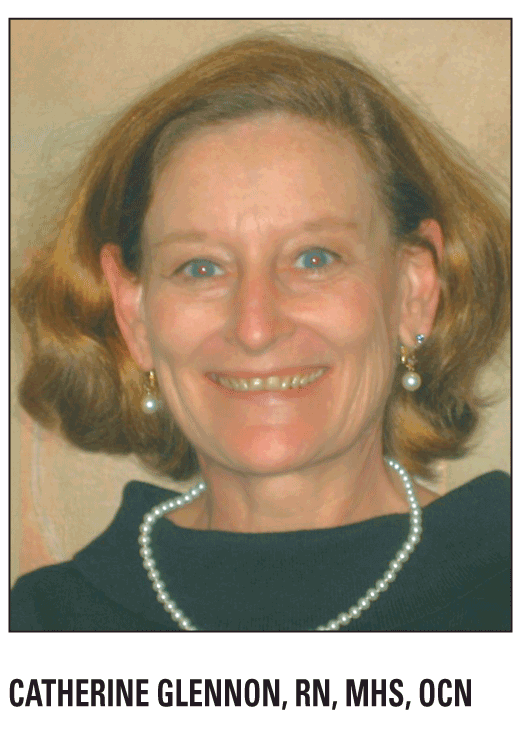
Ms. Glennon: Sixty-seven percent preferred printed materials, while 48% said they preferred Web sites as sources of information. In between were support groups, public service announcements, patient navigators, and conferences. Dr. Oratz: I think the Internet can be a great way for healthcare providers to obtain information for their patients. Healthcare providers can print out information from Web sites and have it available for their patients in their offices.
Support servicesDr. Seidman: There are a lot of practical questions that patients have but don’t know where to go to for help-questions about employment discrimination, insurance. Then there is also a real issue of spiritual needs. As busy, practicing medical oncologists, we aren’t aware of the resources that surround us to meet all the needs.
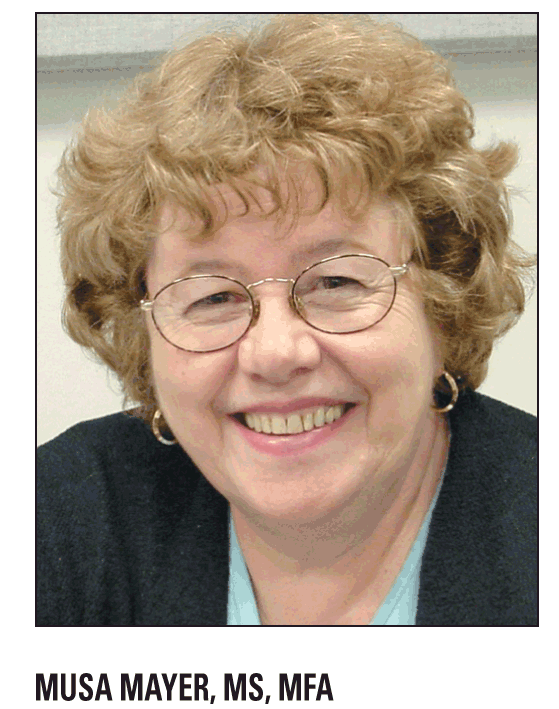
Ms. Mayer: I wonder about the fragmentation of care that patients confront. This really calls for a team approach. Even though resources are available, people don’t know about them. There is a call for an integration and development of resources.
Ms. Caplan: One of the interesting things that emerged from the survey was that 83% of respondents said their oncologists provided emotional support, whereas 78% said that nurses provided such support. It’s interesting to see physicians hold that major role. It’s not so much a shared decision-making model, but one where the doctor tells the patient what’s going on.
Ms. Mayer: We didn’t ask directly about religious practices, but in terms of cultural norms, one of the things that struck me was that in Egypt, women felt less comfortable confiding in their physicians than in their nurses. We hypothesized this is because the physicians are generally male and the nurses are female. In a traditional Muslim culture, it may be difficult for women to talk openly with male doctors.
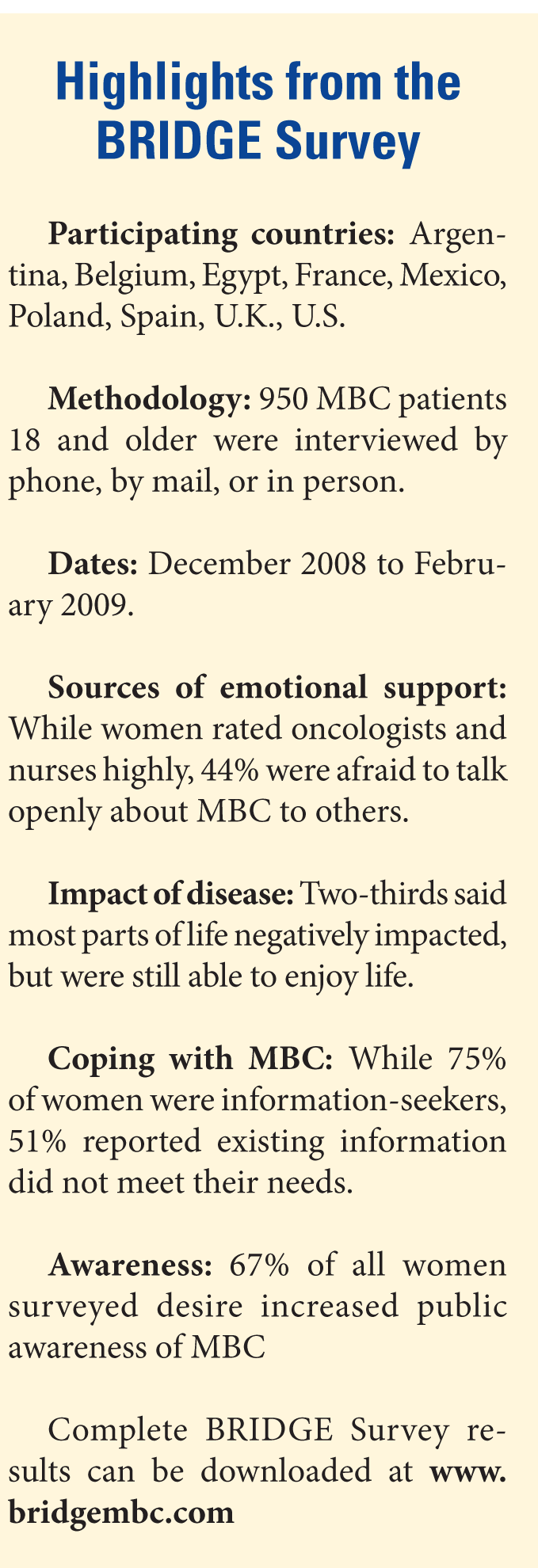
Dr. Oratz: One of the things that we learned is that women really do want access to clinical trials (see Sidebar, below). They understand that MBC is not curable, but there is also this understanding that a woman can live with MBC for many years with her symptoms well managed and without rapid progression of disease. They understand that treatment can be effective and that our best hope is to continue identifying new treatments. This came out in the survey from all women regardless of the number of clinical trials available to them.
Changing attitudesOncology News International: Breast cancer advocates have done a tremendous job of advancing public awareness of screening and early detection. Has that push been detrimental to MBC?
Ms. Mayer: In the developing world, there simply isn’t the level of breast cancer awareness that we have here. In the U.S., it all comes to a head in October: women with MBC feel as if they are not welcome in the pink parade, although this is beginning to change. The Metastatic Breast Cancer Network mounted a successful campaign and had October 13 declared as MBC Day in New York. These women are finally speaking up and saying, “Don’t treat us as your dirty little secret.”
Dr. Oratz: Even in our own language as healthcare providers, we say the patient progressed or the patient failed. The patient didn’t fail; the treatment failed. If the doctors and nurses are talking that way, that’s going to affect the way patients feel about themselves, as if there was a failure on their part to respond to treatment rather than a failure on the part of our medicine to do a better job for them.
Future plans and final messageOncology News International: Have the results of the survey been shared with the participants and their healthcare providers?
Ms. Mayer: That’s one of the things that we are currently assessing: Where do we go with this information? How do we get this information back to the community, the women, the physicians, and out to the scientific and advocacy community to address the concerns that were raised by the women in the survey? We’re hoping that researchers will be intrigued by what we’ve done and will take it another step in their own countries.
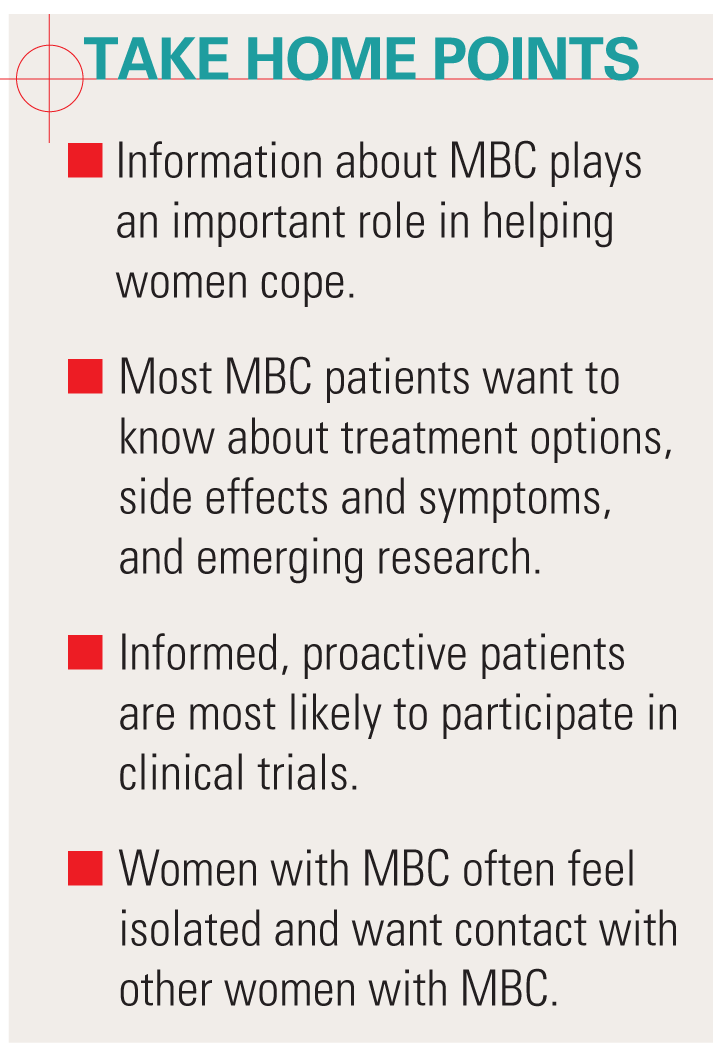
Oncology News International: What is the main message that oncologists should take from the BRIDGE data?
Ms. Glennon: Among the respondents, 67% said that they were able to enjoy life, while 66% said that their lives had changed in a negative way. This is a complex experience for women. They are facing their mortality but they are also committed to living full lives.
Dr. Oratz: That doesn’t negate the fact that there should be a broader public discussion of MBC. These women are saying, “Why isn’t there more information out there about what we are experiencing?”
Ms. Mayer: Also, we can’t ignore the fact that there is still a larger group of unsurveyed patients out there who are not doing as well as the women we talked with. Healthcare providers need to think about reaching out to those women as well.
Newsletter
Stay up to date on recent advances in the multidisciplinary approach to cancer.